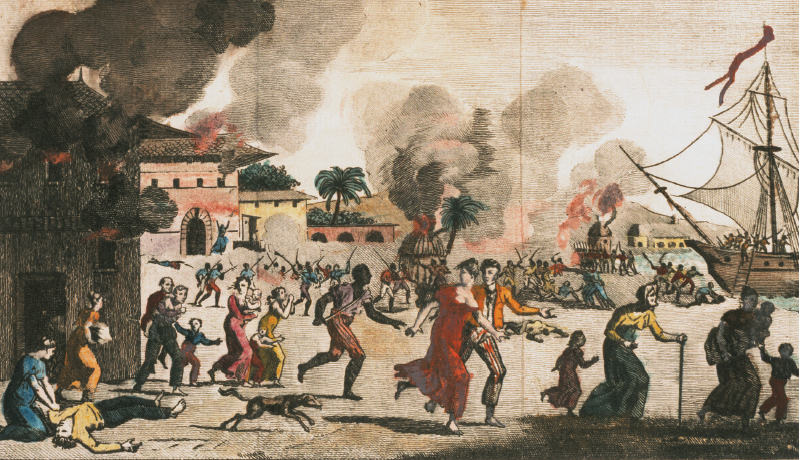Understanding Western Society
Printed Page 602
Chapter Chronology
TTHE EVENTS THAT LED TO THE CREATION of the independent nation of Haiti constitute the third, and perhaps most extraordinary, chapter of the revolutionary era in the late eighteenth century. Prior to 1789, Saint-Domingue, the French colony that was to become Haiti, reaped huge profits through a ruthless system of slave-based plantation agriculture. News of revolution in France lit a powder keg of contradictory aspirations among white planters, free people of color, and slaves. While revolutionary authorities debated how far to extend the rights of man on Saint-Domingue, first free people of color and then enslaved people took matters into their own hands, rising up to claim their freedom. A massive slave revolt in 1791 ultimately succeeded in ending slavery and winning independence from France. In 1804, Haiti became the first nation in history to claim its freedom through slave revolt.

Slave Revolt on Saint-DomingueThis illustration, from the proslavery perspective, emphasizes the violence and destructiveness of the slave rebellion in Saint-Domingue. Many white settlers fled to the United States and other Caribbean islands with as much of their property, including slaves, as they could take with them. (The Library Company of Philadelphia)
